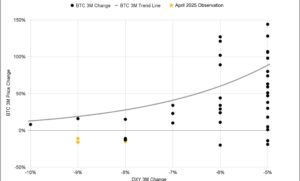Pool Mining: What Is It And How It Works?

More competition in some areas, like in a race, let’s say, is necessary as it ensures that the end product, which is the first position holder, is worth all the praise. However, tough competition makes it difficult for beginners to start off. This is a problem every player encounters not just in the field of sports but more increasingly, in the sphere of mining cryptocurrency as well. The solution to this problem is where the topic of this article lies; Pool Mining.
This article will contain the following aspects of Pool Mining in the order below:
Mining and its Competition in the Cryptocurrency IndustryPool Mining; a solution.Why Pool Mining?Types of Reward DistributionPros and Cons
Before jumping on to the first point to be discussed, let’s start off with a basic introduction to the topic itself. Taking from the race example mentioned in the opening, there is a point to be made about competition. Any race with good competition will be a race which is reputable. Not only is its winner going to be valued more than other easier races’ comparatively, but getting into the race is going to be highly difficult too.
Moreover, when you have a race that is fairly easy, people swarm so much to get into it with hopes of dominating the race that within a few, that once so easy race has now become a tough one itself. Where there is no competition, there will be competition. Whatever is easy to do, given its open to the market, will soon become difficult to do or what would become difficult is getting the same amount of output from that fairly easy task.
These two points are one to be kept in mind when we jump into our topic under the context of Cryptocurrency mining and Pool Mining to be more specific.
Mining and its Competition in the Cryptocurrency Industry
Mining; a term that is practically everywhere and most oftenly common among people who think they can sit on their hands doing nothing and still print cash. However, mining is a complicated procedure which requires a fair bit of knowledge as to what it actually is and how it works. Only after a person figures out how it works can they invest in carrying out themselves. Mining could be said to have risen in popularity as cryptocurrencies rose themselves.
The following question can be posed; Why did cryptocurrencies get so popular themselves? Asking that question is essential to the topic being discussed so let’s answer it as well. While all the number of factors that led cryptocurrencies to the fame they have now are beyond the scope of this article to discuss, a major reason of cryptocurrencies gaining such popularity was because of the fact that there was no single entity in charge of the entire currency; it is decentralized.
Many cryptocurrencies popular on the internet all have a feature in common, they are decentralized. This means that unlike fiat currency, cryptocurrency is not in control of a single entity or institution like the state bank for example. This is a feature that appeases the masses as more and more cases of state misconduct result in the devaluation of a particular fiat currency. People do not want their hard work printed in a paper whose value is dependent upon “a group of people abiding by the correct manner to operate”.
Instead, they want a system which is not governed by a single authority or institution. This is what cryptocurrency brings to the table; Decentralization. Now every tradable currency is tradable because people can carry out transactions with it; a gold coin for a dozen apples or a buck for a drink of water, all currencies have this in common. Now under normal circumstances, the trading of fiat currency took place under the supervision of banks. Banks were the institutions that checked and regulated the transaction process at crucial stages of fiat currency moving in the economy. As cryptocurrencies did not have a single regulatory authority, they chose to rely on opening its regulation to the public.
As a result, all transactions are processed by “nodes” or simply put, “miners”. Due to all transactions being processed by all nodes, there is a public ledger ensuring no faults skimming through the system.
This is where mining comes into play. Mining is a method via which high-performance hardware is used to carry out high-mathematical problems ensuring the maintenance of the blockchain. These high-level mathematical problems need to be processed and solved as they include data pertaining to the millions of transactions that could be taking place at any given instance.
To ensure users mine, there must be an incentive offered. The incentive is some amount of the cryptocurrency they are mining, which is newly minted for them. Hence, mining is essential for the formation of new units of cryptocurrency as well as the maintenance of the blockchain.
Mining is carried out in the following manner. At any given instance, the cryptocurrency blockchain sees a large number of transaction data that needs to be processed. This transaction data that needs to be processed is collected and sorted into “blocks”. If the entire blockchain is like a public ledger with records of each and every transaction that has taken place, “blocks” can be seen as pages that need processing. Users who find solutions to the complex mathematical problems first than others get to another block and the process of mining continues thereforth.
As it is important to find the solution to the mathematical problem associated with mining a block first, timing is key. Chances of your hardware finding the solution in the right time depends on its performance capacity and hence, having high-performance hardware is necessary to ensure consistent mining.
Now that the idea of the basic concepts of mining has been established, we can look at the problems of mining alone and why there was a need to look for an alternative in the first place.
As cryptocurrencies and cryptocurrency mining have become popular, more and more people have entered the mining sphere. These people or sometimes entire organizations, knew the huge size of technical hardware capacity required for greater profits and hence, they dominated and still do dominate the mining sphere.
They do so as their equipment is the quickest to solve the complex problems associated with mining a block and hence, get the next block, and then the next, and so on. As there are thousands if not more numerous powerful miners doing this at any given timeframe, the chances of a traditional single miner finding any blocks to mine are very rare.
Moreover, the costs that are associated with mining equipment that are generating profits are huge. Developing mining rigs that are cost-efficient and durable while also ensuring they are powerful enough to compete for blocks in the current mining industry is, to put frankly, expensive.
Do note that mining rigs can be anything from a computer in your basement to a machine stacked with high-performance graphic cards, each with their cooling and maintenance supervision ensured. Now while you may think you could get started with mining with the former, generating a real profit out of mining means you are competing with the latter of the aforementioned example.
The costs associated with building a rig are right off the bat high. However, they are increasing. As most mining rigs involve the use of strong graphic cards which were out-right expensive either way, there is an increasing demand for them. These strong graphic cards were, and most still are, manufactured for the gaming industry where you need high-performance equipment to render the required graphics.
However, due to their high performance capacity, they were adopted by miners to mine blocks. This gave them an edge but, this also meant that the cryptocurrency mining industry needs graphic cards as well now.
Due to two industries needing one genre of product, graphics card in this case, their prices skyrocketed, and as demand continues, the prices can be seen to climb even higher. It should also be noted that some graphic card manufacturers realize the demand of the cryptocurrency mining industry, and while some may go towards catering this need, many manufacturers are now producing cards with modifications that make them impractical for mining.
Moreover, the cooling equipment required adds another cost to the list as when mining, the mining equipment or “mining rig” as it’s more commonly called, eats a lot of power and generates a lot of heat. Hence, custom cooling equipment is required for each type of mining rig and the cost to run that is something that single miners have to account for as well. As stated earlier, mining rigs eat a lot of power to do the hard work of mining through blocks as well. This obviously introduces electricity costs into the list as well.
Due to these challenges, which summarized come down to spending huge amounts on equipment, power and cooling in a place where you are not even finding that many blocks to mine to earn actual cryptocurrency out of, make mining alone a difficult task to do.
As a result, single miners in the community needed to look for an alternative. That alternative came in the name of Pool Mining.
Pool Mining; a solution
As stated earlier, the competition in finding a new block was increasing as miners with huge mining rigs dominated the blockchain. Single miners found it difficult to mine alone so they looked at each other, and said that the old man was right, stronger together.
This is where pool mining stems from. From the idea of combining power to gain a collectively bigger profit. Coming to a proper definition of pool mining, it can be defined as follows. Pool mining is a method of mining in which solo, individual miners come together and combine their hashing power in order to compete with the giant dominant players in the mining industry. By combining the mining power of each other, they intend to reach output levels comparable to those with giant mining farms full of stacked up graphic cards running at full throttle. At times, these pools are so effective, they exceed the capacities of many hugely established farms.
There is one term we encounter here that is not explained anywhere before in this article; hash power. Rather than going into what many would call “technical-mumbo-jumbo”, we decided to give an explanation that is concise and useful to learning about pool mining. Hashrate can be defined as the computational power of a mining rig on a particular cryptocurrency network. This means that mining rigs with a high-performance hardware set will have a higher hashrate than your typical basement PC.
Why Pool Mining?
Now looking at why solo miners would consider joining a pool; it is often a question asked to learn more effectively about a practice. What’s in it for them? For the miners, there are multiple reasons to join a mining pool but let’s illustrate one of them by going back to bringing into highlight an earlier discussed problem, which is of high competition in finding blocks. As there are huge farms which chomp onto so many blocks in a given timeframe, there is only so much left for the average miner. This is so because whoever gets the solution to the highly complex mathematical puzzle first, gets the block. In order to find the solution, you must have a computational power that is so high, it finds the solution before anybody else.
Your average miner doesn’t have that much juice in their system and hence, pool mining comes to the rescue. By having a network of solo miners combine their computational power, or hashrate, you stand a better chance at solving the mathematical puzzle. By having all of the computational powers of each member in the pool concentrated and using that to solve the complicated puzzle, mining pools can then compete with the huge farms that exist in dominance.
For the average miner, this means that even though they may be spending roughly the same on electricity, cooling and equipment, they are getting a return for it. They are not running their entire systems searching for blocks. Instead, they join a network of miners where the chances of finding a block are much higher. The block is mined using the collective computational power of all members and each member in the pool is rewarded as per their contribution. Hence, the miner may be making less however, the miner will be making consistently. It is the consistency of the profits earned which give mining pools their fame.
Most mining pools assign their members work in the form of “units” or “shares”. Each unit of work assigned to each member may be calculated as per each member’s ability by the mining pool itself. For example, if a member has a better mining rig than most of the other members, that particular member may receive more work units as compared to others. On the other hand, the work units received by each member may also depend on how many work shares the member itself wants to take.
However, work shares themselves are of two types; accepted and rejected. Work units or shares can be accepted or rejected by the mining pool on the basis of one simple factor; whether it helped the pool find a new block. Accepted work shares are those that have had a positive impact on the chances of the pool finding a new block while rejected work shares are those units of work done by the members that did not increase the chances of finding a new block. Rejected work shares are an important point to note for a reason. No matter how much work a member’s machine does, if it’s useless in terms of helping the pool find a new block, that very share is rejected.
Types of Reward Distribution
Like many things encountered in life, not all mining pools are the same. They all function under different underlying methods or principles and it is important to the topic being discussed to understand the major or the most popular variants of mining pools that are out there. It is hence advised to see how a pool distributes rewards across its members before joining the pool.
One common method is to distribute the rewards at the end of each mining round in proportion to how many accepted shares a miner has. Thus, more accepted shares mean greater rewards. Note that in this method, the rewards are shared at the end of each mining session.
Another method is called the Pay-Per-Share where the miner can instantly cash out their reward on each of their shares once it gets accepted. This means that the miner can get their reward instantaneously, regardless of when the block is found.
Pros and Cons of Pool Mining
When it comes to the benefits of Pool Mining for the average miner, it all comes down to how competitive it has gotten to mine popular cryptocurrencies. With rising competition, there are also hardware maintenance and electricity costs a miner has to take care of making the chances of profit from solo mining slim. With pool mining, the chances of finding blocks to mine increase and as a result, the chances of making a profit increase too. In some circumstances, there is also a decrease in hardware maintenance and electricity costs associated with pool mining. Hence, solo miners get a lesser profit, in return for a higher probability of finding blocks.
Disadvantages could include how the miner does not have complete ownership of how the mining process is approached. They are bound by the rules of the pool. Members are also made to divide the profits among themselves which mean an overall lesser profit for each member.
Conclusion
To put it all in conclusion, this article set out to define what pool mining is to the average reader. It was carried out by giving context in terms of how cryptocurrencies function and what mining actually is, and then how different Pool Mining itself is from the traditional way of solo miners.





